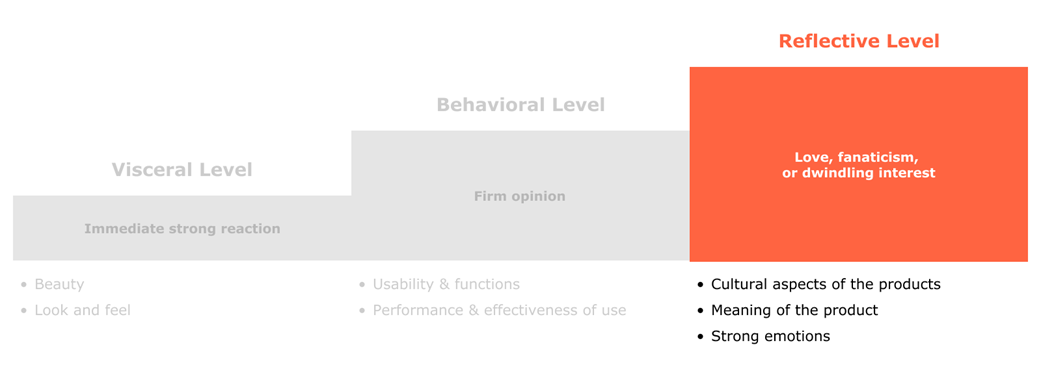6 Designing for Change
This chapter covers
- Things we need to know about design at the reflective level
- The role of emotions, motivation, and habits at the reflective level
- The CAR framework
- The necessity and critical importance of user research
- Transparency, trust, and influence: a trifecta for successful design at the reflective level
At this moment, don’t you feel like a mountaineer climbing to the top of Everest? Because the time has come for the final push!
Here’s the third and final level of design—the reflective level.
Figure 6.1 Reflective Level of Design

Let me remind you that it's at this level that we experience love or hate, obsession or hardcore apathy. Here, users have already familiarized themselves with the product's interface. They've had a chance to form a firm opinion about its ease of use, stumble over bugs, or find it an easy and pleasant experience… Now, they have the very last piece of this puzzle—a vision of what role (if any) your product will play in their lives.
In short, here's the main difference: while in the previous two levels, we worked with the user's feelings, reactions, and unconscious actions, reflection is the process of making sense of experience at the conscious level. This means that the reflective level is closely related to conscious cognition, where reasoning and conscious decision-making take place.
Take a project management tool like Trello. When a new user opens it for the first time, they get their first reaction (Figure 6.2).